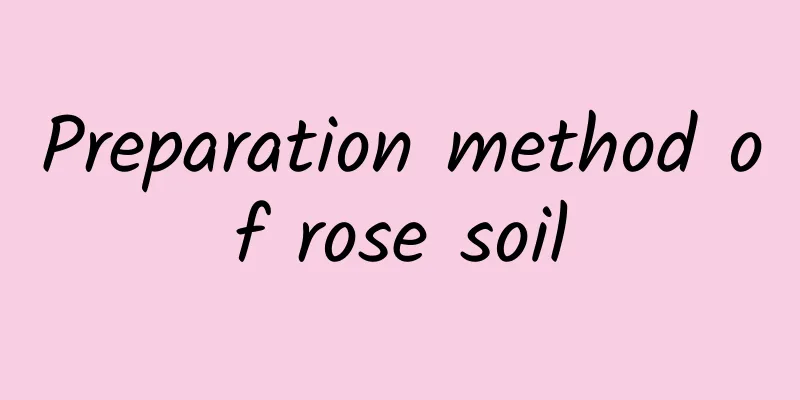Breeding methods and precautions of Bay Leaf Shou

1. Maintenance methods1. Substrate selection: The substrate used for breeding must have good air permeability and drainage. Generally, materials such as leaf mold and coarse sand mixed soil will grow better. 2. Light management: Expose it to soft sunlight and place it in a sunny place. It can be exposed to direct sunlight in spring and autumn. In summer, it should be shaded and protected from the sun. In winter, it can be exposed to direct sunlight. 3. Temperature management: When the temperature is lowest in winter, it cannot be lower than 10℃. It can also tolerate a temporary environment of 5℃ or below 0℃, but it cannot be kept at low temperatures for a long time. 4. Water management: The palm leaf spathiphyllum likes drought. Generally, the flower soil should be slightly moist to avoid water accumulation in the pot. The humidity can be slightly higher, but it cannot be too waterlogged. 2. Breeding techniques1. Cuttings: Mainly leaf cuttings. Cut the leaves off and dry them slightly before cutting, otherwise the cut parts will easily rot. You can also cut off the top growth point to promote new buds to grow in the leaf axils. 2. Wintering: In winter, it should be placed in a well-lit place indoors, and the minimum temperature should not be lower than 10℃. And you should reduce watering to make the plant enter a dormant state. It can withstand temperatures around 0 degrees Celsius. 3. Problem diagnosis and treatment1. Root rot: It likes a relatively warm and dry growing environment. Do not water it excessively, otherwise it will easily cause root rot. You should add water appropriately to keep the soil moist. 2. Scale insects: When scale insects are found on the plants, it is necessary to use pesticides as soon as possible. Generally, 2000 times diluted 40% dimethoate emulsifiable concentrate is used for spraying. The pesticide should be sprayed evenly. IV. Other issues1. Can it be exposed to rain: It cannot be exposed to rain. Too much rain will cause the roots of the plant to rot and affect its growth. Be sure to control the moisture and avoid excessive rain. 2. Is it poisonous? It is not poisonous. The plant of Palustris odoratus is small and beautiful, crystal clear, very suitable for small potted plants, and has a certain decorative effect. It can absorb toxic gases and can also be viewed by humans to appreciate its unique charm. |
<<: Louis XIV's breeding methods and precautions
>>: Cultivation methods and precautions of weeping willow
Recommend
What is the reason why wheat leaves turn yellow and dry during the seedling stage?
Wheat has a wide range of uses and is present in ...
The difference between osmanthus and osmanthus
1. Height First of all, we should make it clear t...
When is the best time to plant chive roots? What is the best month to plant?
There are mainly two methods for planting leeks, ...
How to grow peppers to get high yield?
Peppers are high in vitamin C and are not only an...
How to trim a miniature coconut tree to make it look good
When is the best time to prune a miniature coconu...
Method of hydroponic onion cultivation
1. Processing onions Before hydroponically growin...
When should petunias be sown?
Petunia, also known as Petunia , is a perennial h...
"Illustrated" Thousand Buddha Hand Cuttings
Thousand Buddha Hand Cutting Preparation Tools 1....
Can the water containing carbendazim be used to water succulent plants?
Can carbendazim water be used to water succulent ...
Pests and control methods of two-line arrowroot
Pests of two-line arrowroot: scale insects sympto...
Rosemary growth environment conditions and characteristics
Rosemary growth environment conditions and requir...
How to cultivate summer plum
1. Maintenance methods 1. Temperature: It has a v...
What is Yacon? How to Eat Yacon
1. What is Yacon is a vegetable, but since it can...
Is cherry planting profitable? What is the cost and profit per acre?
Is growing cherries profitable? The market price ...
Grow these ten kinds of flowers and your home will be filled with fragrance!
Daffodils Daffodils are relatively common flowers...









